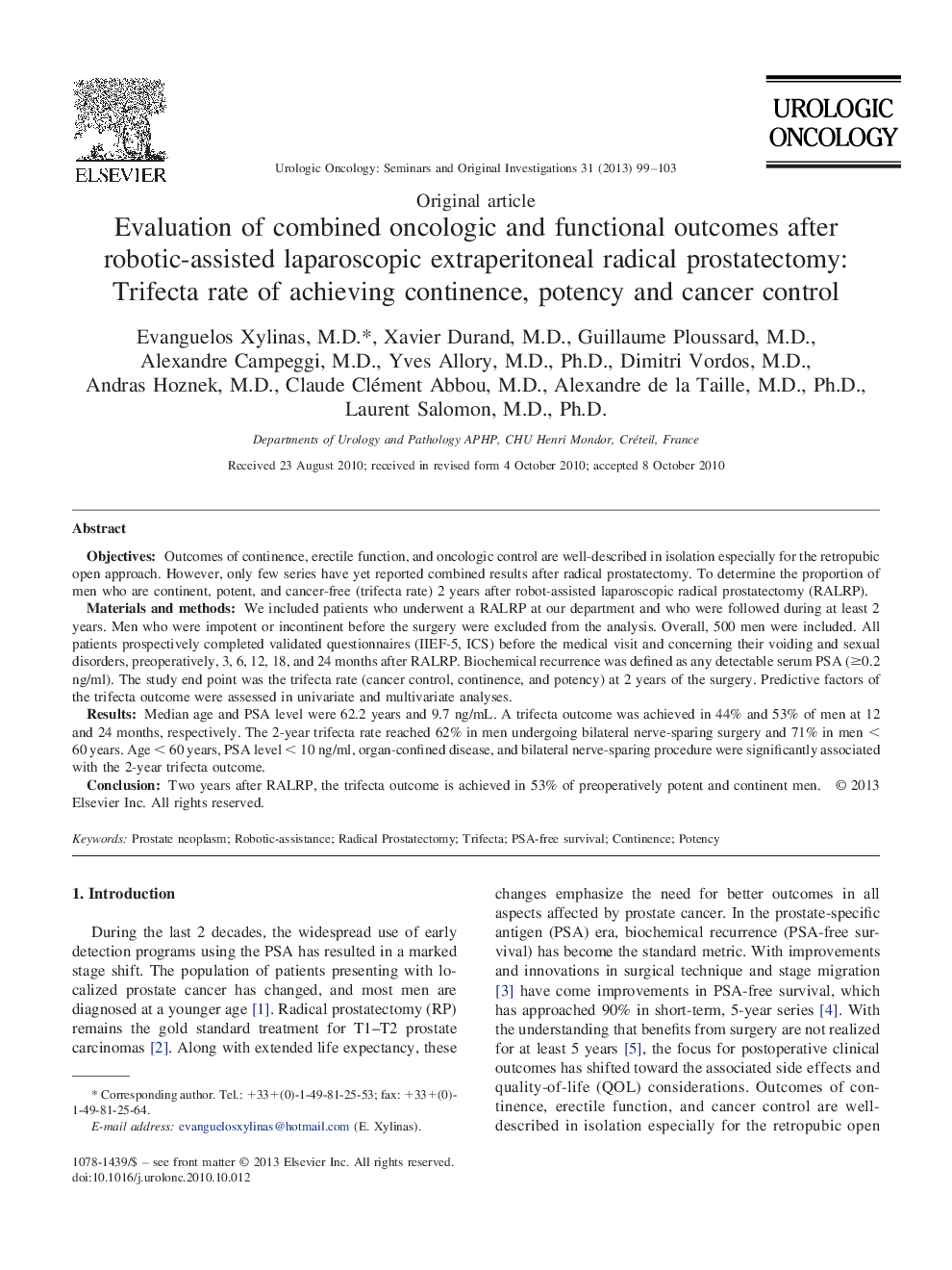| Article ID | Journal | Published Year | Pages | File Type |
|---|---|---|---|---|
| 4000169 | Urologic Oncology: Seminars and Original Investigations | 2013 | 5 Pages |
ObjectivesOutcomes of continence, erectile function, and oncologic control are well-described in isolation especially for the retropubic open approach. However, only few series have yet reported combined results after radical prostatectomy. To determine the proportion of men who are continent, potent, and cancer-free (trifecta rate) 2 years after robot-assisted laparoscopic radical prostatectomy (RALRP).Materials and methodsWe included patients who underwent a RALRP at our department and who were followed during at least 2 years. Men who were impotent or incontinent before the surgery were excluded from the analysis. Overall, 500 men were included. All patients prospectively completed validated questionnaires (IIEF-5, ICS) before the medical visit and concerning their voiding and sexual disorders, preoperatively, 3, 6, 12, 18, and 24 months after RALRP. Biochemical recurrence was defined as any detectable serum PSA (≥0.2 ng/ml). The study end point was the trifecta rate (cancer control, continence, and potency) at 2 years of the surgery. Predictive factors of the trifecta outcome were assessed in univariate and multivariate analyses.ResultsMedian age and PSA level were 62.2 years and 9.7 ng/mL. A trifecta outcome was achieved in 44% and 53% of men at 12 and 24 months, respectively. The 2-year trifecta rate reached 62% in men undergoing bilateral nerve-sparing surgery and 71% in men < 60 years. Age < 60 years, PSA level < 10 ng/ml, organ-confined disease, and bilateral nerve-sparing procedure were significantly associated with the 2-year trifecta outcome.ConclusionTwo years after RALRP, the trifecta outcome is achieved in 53% of preoperatively potent and continent men.
